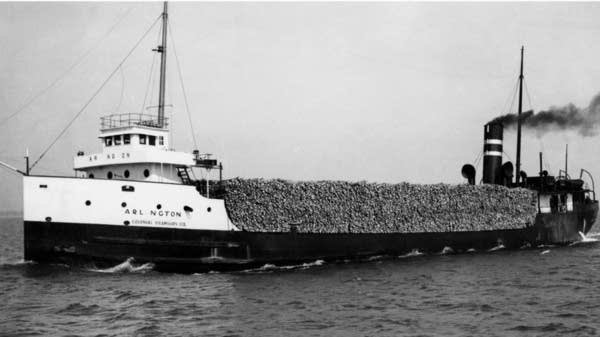In a remarkable discovery, a cargo ship that sank more than eight decades ago has been found at the bottom of Lake Superior in Michigan. The ship, identified as the SS Samuel Mather, went down in 1940, but its remains have recently been located by a team of divers.
The SS Samuel Mather was a freighter that operated on the Great Lakes during the early 20th century. It was carrying a cargo of iron ore when it encountered rough weather and sank off the coast of Michigan’s Upper Peninsula. The exact cause of the sinking remains unknown, but it is believed to have been the result of a combination of factors, including heavy seas and structural damage.
The discovery of the SS Samuel Mather has generated considerable excitement among maritime historians and enthusiasts. The ship’s wreckage is remarkably well-preserved, providing valuable insights into life on the Great Lakes during the mid-20th century.
Divers exploring the wreckage have reported finding a variety of artifacts, including intact sections of the ship’s hull, machinery, and cargo. The discovery offers a rare glimpse into the past and sheds light on the challenges faced by sailors navigating the Great Lakes.
The SS Samuel Mather was one of thousands of ships that plied the waters of the Great Lakes during the heyday of the region’s shipping industry. Its discovery serves as a reminder of the rich maritime history of the area and the important role that shipping played in the development of the region.
Efforts are now underway to document and preserve the wreckage of the SS Samuel Mather. The discovery has sparked interest from historians, archaeologists, and preservationists, who are eager to learn more about the ship’s history and ensure that its legacy is protected for future generations.
The finding of the SS Samuel Mather is a testament to the enduring allure of shipwrecks and the mysteries they hold. It is a reminder of the fragility of human endeavors in the face of the forces of nature and the resilience of the human spirit in the pursuit of discovery and understanding.
The discovery of the SS Samuel Mather also serves as a poignant reminder of the risks and sacrifices made by sailors who navigated the treacherous waters of the Great Lakes. The shipwreck stands as a memorial to the crew members who lost their lives in the tragic sinking, their stories now preserved in the rusted remnants resting on the lakebed.
As efforts continue to explore and document the wreckage, researchers hope to uncover more details about the circumstances surrounding the ship’s final voyage. Through careful examination of artifacts and historical records, they aim to piece together the events leading up to the sinking and gain a deeper understanding of this chapter in maritime history.
The discovery of the SS Samuel Mather highlights the ongoing importance of underwater archaeology in preserving and interpreting our maritime heritage. By studying shipwrecks like this one, researchers can learn valuable lessons about the past while also promoting conservation efforts to protect these underwater cultural sites.
In addition to its historical significance, the wreckage of the SS Samuel Mather has the potential to become a popular destination for divers and tourists interested in exploring the underwater world of Lake Superior. As awareness of the discovery spreads, it may inspire new generations to appreciate the rich maritime history of the Great Lakes region.
The discovery of the SS Cornelia B. Windiate provides a unique glimpse into maritime history and the challenges faced by sailors navigating the Great Lakes. It serves as a reminder of the treacherous conditions that vessels encountered during that era, especially in the unpredictable waters of Lake Superior. The wreck also offers an opportunity for researchers and historians to study the ship’s construction, cargo, and the circumstances surrounding its sinking.

